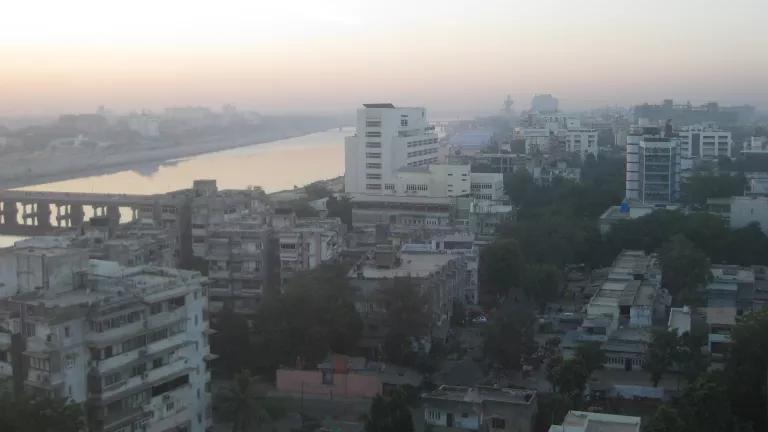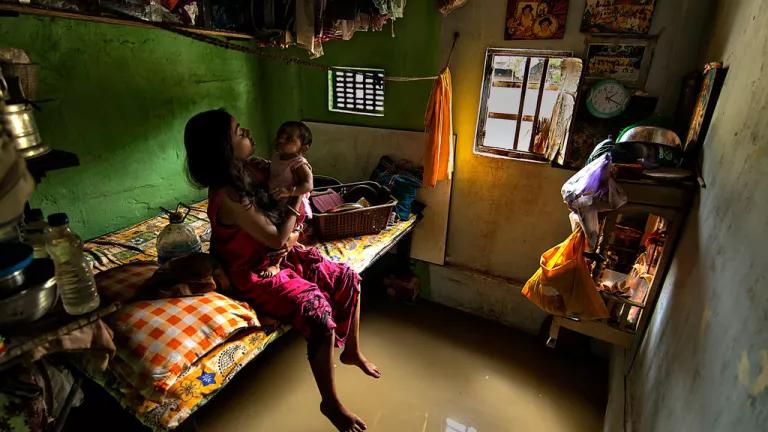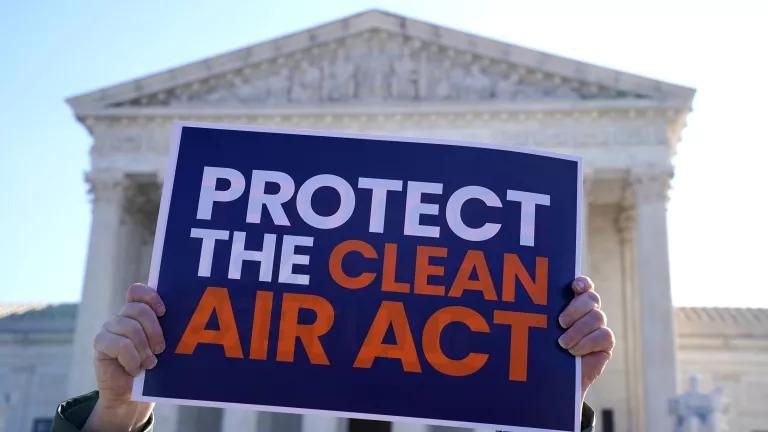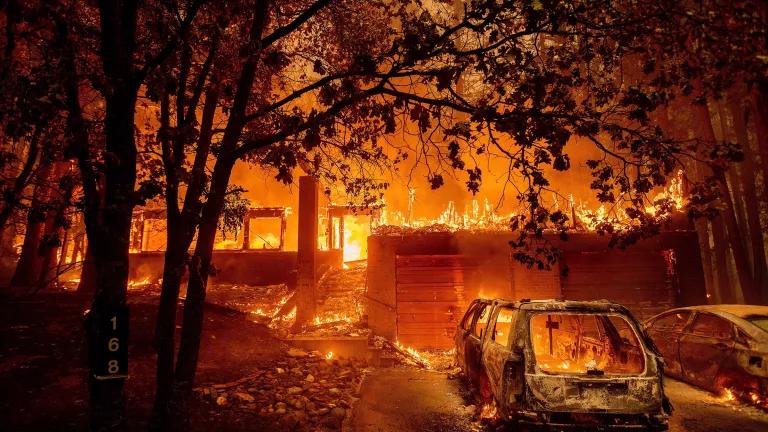Health as Lens for Shaping More Equitable Climate Policy
Air pollution bears down disproportionately on the economically disadvantaged and many communities of color. It plays a key role in the disproportionate burden of respiratory health threats from COVID-19 plaguing the nation.

Ahmedabad, India, on a smoggy winter day
Anjali Jaiswal/NRDC
The global 2020 Lancet Countdown report, launched today, draws the newest picture of climate change’s harms to public health, right here and right now. For the last five years, the Countdown has issued these annual assessments of climate-health effects, both globally and for a few specific countries. The Countdown offers recommended steps for how governments can provide more climate-health protection.
Climate Change and Inequities: The Double-Whammy to Health
The report offers the science and case studies to back up what we know first-hand from the times we’re living through, like those blistering summers year after year. But extreme heat is way more than an inconvenience—it can kill. The 2020 update has been called the “most concerning Lancet Countdown yet”—the U.S. brief finds that:
- Air pollution in the U.S. contributed to about 68,000 premature deaths in 2018, from health-harming fine particles from sources that are largely about burning fossil fuels.
- Millions of Americans are dealing with wildfire risks at an increasing rate. Hotter days and drier summers across much of the American West caused a 19% jump in the number of days on which people experienced high wildfire risk in 2016-2019, compared to 2001-2004.
- Older folks can’t get a break from extreme heat. 19,000 seniors died in 2018 from heat-related causes; over the last 20 years the death rate has nearly doubled for people 65 and older.
- We’re sweating it more in the workplace, too. Lost productivity caused by just too much heat on the job increased 63% from 2015-2019, compared to the 1990-1994 average.
How do we get from the alarming findings in the report, to actions that will make a difference in people’s lives, and help reduce the inequities that place many millions of people in harm’s way?
Cleaner Energy Means Better Health, Clearer Air, and Slower Climate Change
Air pollution is a byproduct of climate-worsening fossil fuel use. And using less dirty fossil fuel means improving air quality. While the report’s findings are sobering, it also includes steps to drive us toward measurable health improvements. And beyond the report, there are waves of scientific evidence about the real, measurable health improvements from moving toward cleaner energy, beyond slowing global climate change.
These current-day health improvements are sometimes called health “co-benefits”, since they’re positive side-effects we can achieve in the near-term, in addition to the benefits of limiting future damage from climate change. Supporting clean energy saves tens of thousands of lives today and billions of dollars in healthcare costs by reducing air pollution (and helps limit the worst effects of climate change, too).
Here in the US for example, a recent study found that using electricity more efficiently (with energy-efficient appliances, for example) could avoid 300 deaths each year from less fine particle pollution, with another 175 premature deaths avoided from ozone smog reductions. The Regional Greenhouse Gas Initiative (RGGI) limits greenhouse gases and associated air pollution emissions in a group of 10 northeastern U.S. states. A 2020 study suggests that RGGI helped avoid 537 cases of asthma among the region’s children and over 100 pre-term births from 2009-2014.
Air pollution is very much a top global health problem, especially in South Asia, where an estimated 1.67 million people died last year from air pollution in India. To estimate the local health benefits of shifting toward clean energy in one city in India, NRDC is working as part of team that includes experts on energy (Gujarat Energy Research Management Institute, GERMI), climate change and air pollution (Indian Institute of Tropical Meteorology, IITM), and health (Indian Institutes of Public Health, IIPH-PHFI). The team is developing ways to estimate the health benefits that Ahmedabad could realize by 2030 from better air quality during a shift to clean energy. The project will also investigate the effects of implementing climate adaptations like cool roofs and tree planting, which help reduce local temperatures and associated urban air pollution.
Air pollution bears down disproportionately on the economically disadvantaged and many communities of color. It plays a key role in the disproportionate burden of respiratory health threats from COVID-19 plaguing the nation. The new Lancet Countdown report reminds us that action now to tackle multiple crises at once—health, climate change, racial, economic and social inequity—is a necessity now.
The India health co-benefits project is supported by the Wellcome Trust [grant # 216093/Z/19/Z]



